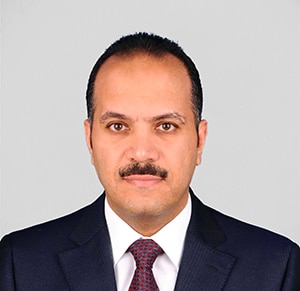Mohammad Y. Al-Hashel, governor of the Central Bank of Kuwait, highlights the strengths of the nation’s banking sector—and the challenges of its oil-centric economy.

Global Finance: What are the key regional concerns and prospects for Kuwait?
Mohammad Y. Al-Hashel: In the GCC region, economies are still largely dependent on oil. Lower oil prices—and their increasing volatility—are a key challenge for us, as our primary source of revenues is uncertain. Moreover, trade tensions and increasing protectionism is weighing on global growth, influencing the demand for oil. Also, we must consider that geopolitical risks in the region are still elevated.
Kuwait is well placed to weather this challenging economic environment. We have large financial buffers, low public debt and a stable banking system. However, maintaining long-term sustainability will be a challenge unless we carry out the required structural reforms to help wean ourselves off oil dependence and ensure economic diversification. This calls for the private sector to play a greater role creating jobs, generating revenue and pushing economic growth.
GF: How stable is Kuwait’s banking sector?
Al-Hashel: Given the predominantly bank-centric nature of our financial system, our primary focus—when it comes to regulation and supervision—is making sure the banking sector is and remains stable.
The CBK has made strenuous efforts to ensure financial stability, and our banking sector’s performance speaks for itself. Just a few examples: Non Performing Loan Ratios (NPLR) dropped to a historically low level of 1.6% in 2018. At the same time, the banks’ coverage ratio has climbed to a record high of 254%, proving their ability to withstand any potential deterioration in asset quality.
In terms of our capital adequacy ratio, Kuwait’s banking industry stands at 18.3%, well above the Basel benchmark. Our 10.3% leverage ratio is also much higher than the 3% global benchmark, reflecting the banks’ strong capacity to extend credit. At the same time, profitability remains healthy, which is a key challenge for banks in many parts of the world in the context of record-low interest rates.
GF: How can Kuwaiti banks help develop the private sector?
Al-Hashel: The importance of banks in funding private-sector activities is growing. A good example of that is the increased lending to oil and gas companies that, up until now, never relied on bank borrowing. Bond issuance, however, is very limited, even with very large firms.
For the CBK, ensuring healthy credit growth has been a key consideration, both in our conduct of monetary policy as well as prudent regulation. On the monetary policy front, we did not join in three of the four rate hikes made by the Federal Reserve in 2018 to bolster domestic credit.
As for prudent regulation, we revised our instructions on housing and other consumer loans last year to reflect the changing needs and increasing borrowing capacity of households, enhancing the maximum limit of housing and consumer loans to 25 times the net salary, or a maximum of 25,000 Kuwaiti dinar [$82,000]. These measures have been helpful in supporting credit growth last year. Domestic credit by Kuwaiti banks was up 4.9% in 2018, compared to 3.9% the year before. Likewise, lending to households increased by 7.8% in 2018, though the impact of our revised instructions will be more visible this year.
GF: What is CBK doing to foster financial-sector innovation?
Al-Hashel: We encourage banks to harness the potential of new technologies, but also to take adequate safeguards against attendant risks. We have adopted an enabling and proportionate regulatory approach toward innovation, using a tiered process for introducing rules in accordance with the risks involved.
We have formally introduced a regulatory sandbox to provide a safe testing place for new products and services by banks or start-ups before their full-scale rollout to end users. In a similar vein, our new instructions on the payment system allow both infrastructure providers and payment agents to offer innovative services while adhering to the highest standards of risk management and consumer protection.



